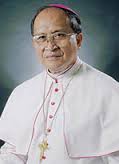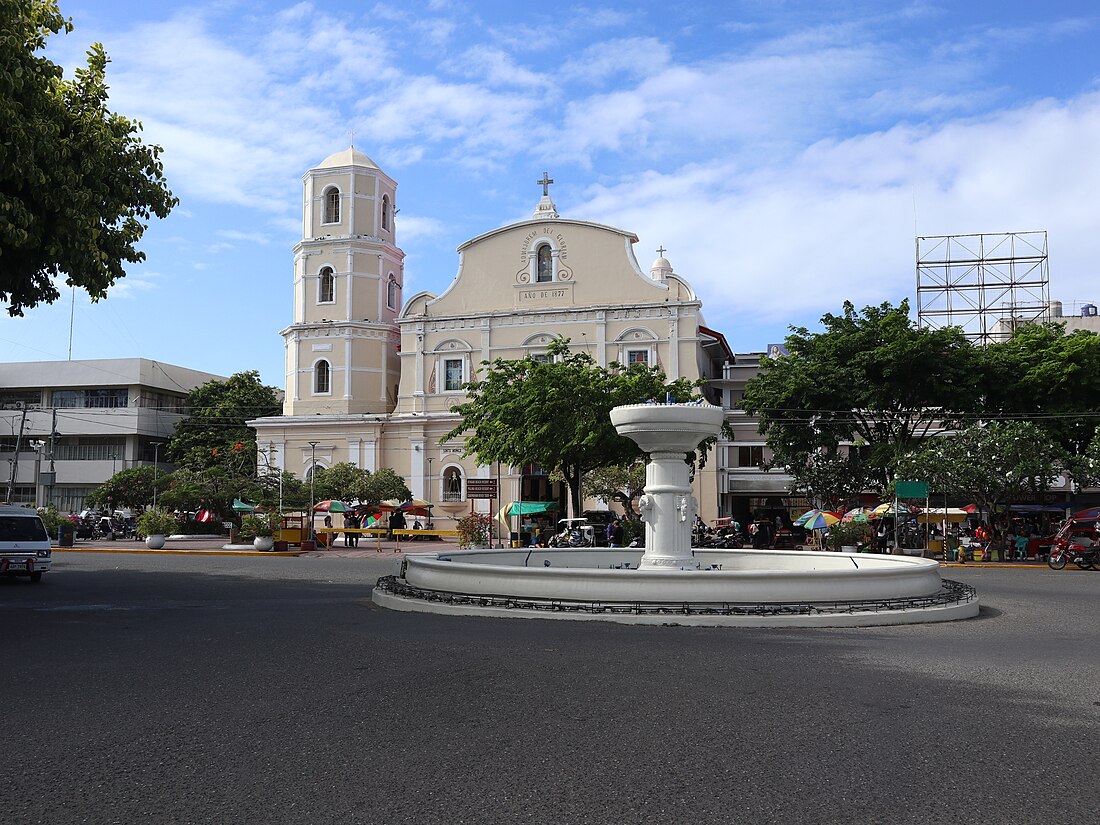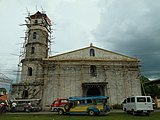Roman Catholic Archdiocese of Capiz
Roman Catholic archdiocese in the Philippines From Wikipedia, the free encyclopedia
The Archdiocese of Capiz is a Latin Church metropolitan archdiocese the Catholic Church in the Philippines. The archdiocese covers the entire province of Capiz on the island of Panay in the Visayas, central Philippines, and has its see in Roxas City. As an ecclesiastical province, it also encompasses the suffragan sees of Kalibo, which oversees the province of Aklan, and Romblon, which oversees the province of the same name. Its current archbishop is Victor Barnuevo Bendico, who was installed on May 3, 2023.[4]
Archdiocese of Capiz Archidioecesis Capicensis Artsidiyosesis sang Capiz Arkidiyosesis ng Capiz Arquidiocesis de Cápiz | |
|---|---|
| Catholic | |
 | |
 Coat of arms | |
| Location | |
| Country | Philippines |
| Territory | Capiz |
| Ecclesiastical province | Capiz |
| Metropolitan | Capiz |
| Coordinates | 11.5836°N 122.7530°E |
| Statistics | |
| Area | 2,663 km2 (1,028 sq mi) |
| Population - Total - Catholics | (as of 2021) 908,000[1] 823,825[2] (90.7[3]%) |
| Parishes | 37[citation needed] |
| Information | |
| Denomination | Catholic |
| Sui iuris church | Latin Church |
| Rite | Roman Rite |
| Established | January 27, 1951 (Diocese) January 17, 1976 (Archdiocese) |
| Cathedral | Immaculate Conception Metropolitan Cathedral |
| Patroness | Immaculate Conception |
| Secular priests | 113[citation needed] |
| Current leadership | |
| Pope | Francis |
| Major Archbishop | Victor Barnuevo Bendico |
| Metropolitan Archbishop | Victor Barnuevo Bendico |
| Suffragans | Jose Corazon Tala-oc (Kalibo) Narciso Abellana (Romblon) |
| Vicar General | Rufino Regie Pamposa |
| Bishops emeritus | Jose Advincula (2011–2021) |
| Map | |
 Jurisdiction of the metropolitan see within the Philippines | |
History
Summarize
Perspective
The tumultuous situation that the Philippine Catholic church had experienced in the aftermath of the Philippine Revolution and the American occupation prompted the Holy See to issue the Apostolic Constitution Quae Mari Sinico in 1902. This document, apart from encouraging the gradual transition of ecclesiastical leadership to the Filipino secular clergy, also proposed the formation of new dioceses in Lipa, Zamboanga, Tuguegarao, and Capiz.[5] However, as Quae Mari Sinico does not have a consistorial decree on the proposed new dioceses, they remained in the jurisdiction of their mother dioceses; in the case of Capiz, it remained under the Archdiocese of Jaro.[6]
Decades after the Quae Mari Sinico, the Diocese of Capiz was eventually formed on 27 January 1951 by virtue of the Apostolic Constitution Ex supremi apostolatus. The new diocese was carved from the territory of the Archdiocese of Jaro, and covered the whole civil provinces of Capiz (which included Aklan until 1956) and Romblon.[7]
Two dioceses were eventually created from its territory: the Diocese of Romblon (19 December 1974) and the Diocese of Kalibo (17 January 1976).[8][9]
On 17 January 1976, Pope Paul VI elevated the bishopric to the rank of an archdiocese through his Papal Bull Nimium Patens which turned it into an ecclesiastical province. The dioceses of Romblon and Kalibo became its suffragans.[10]
The archdiocese retained the name Capiz since its establishment predates the renaming of the municipality where it sits into Roxas City (11 April 1951).
Coat of arms
The silver crescent on the blue background symbolizes the Immaculate Conception, titular of the cathedral. The twins (kapid in Visayan) suggest the name of the territory of the diocese, the province of Capiz. The gold background indicates the unique honor accruing to the province from the fact that the highest men in Church and State at the time when the Philippines became a republic were both from Capiz: the Gabriel M. Reyes then-Archbishop of Manila and Manuel Roxas, the first President of the Third Philippine Republic. Hence, the twin at the dexter side holds a patriarchal cross, insignia of an archbishop, while the one at the sinister side holds a sheathed ancient ceremonial sword of command.[11]
Suffragan dioceses
List of Ordinaries
Bishops
| Name | Period in Office | Coat of Arms | |||
|---|---|---|---|---|---|
| From | Until | ||||
| 1. |  |
Manuel Porcia Yap† | February 13, 1951 | March 5, 1952
(Appointment; Bishop of Bacolod) |
 |
| 2. | Antonio Floro Frondosa† | March 5, 1952 | January 17, 1976
(Appointment; Archbishop) |
 | |
Archbishops
| Name | Period in Office | Coat of Arms | |||
|---|---|---|---|---|---|
| From | Until | ||||
| 1. | Antonio Floro Frondosa† | January 17, 1976
(Appointment; former Bishop) |
June 18, 1986
(Retirement) |
 | |
| 2. |  |
Onesimo Cadiz Gordoncillo† | June 18, 1986
(Appointment; former Bishop of Tagbilaran) |
November 9, 2011 |  |
| 3. | Jose Fuerte Advincula, O.P. | November 9, 2011
(Appointment; former Bishop of San Carlos) |
June 24, 2021
(Appointment; Archbishop of Manila) |
 | |
| 4. | Victor Barnuevo Bendico | May 3, 2023
(Appointment; former Bishop of Baguio) |
Incumbent |  | |
Auxiliary Bishops
| Name | Period in Office | Coat of Arms | |||
|---|---|---|---|---|---|
| From | Until | ||||
| 1. |  |
Vicente Macanan Navarra | April 23, 1979 | November 21, 1987
(Appointment; Bishop of Kabankalan) |
|
Affiliated bishops
- Jaime Sin, first rector of St. Pius X Seminary (1957–1967); Archbishop of Jaro (1972–1974); Archbishop of Manila (1974–2003)
- Warlito I. Cajandig, appointed Apostolic Vicar of Calapan in 1989
- Vicente Navarra, first Bishop of Kabankalan (1987–2001); Bishop of Bacolod (2001–2016)
- Victor B. Bendico, appointed Bishop of Baguio in 2017 to 2023; Later he was appointed Archbishop of Capiz in 2023
- Jose Advincula, Bishop of San Carlos (2001–2011); Archbishop of Capiz (2011–2021); appointed Archbishop of Manila in 2021[12]
Administered Schools
- St. Pius X Seminary (Roxas City)
- Sancta Maria, Mater et Regina, Seminarium (Roxas City)
- Colegio De La Purisima Concepcion
Gallery
See also
References
Wikiwand - on
Seamless Wikipedia browsing. On steroids.






